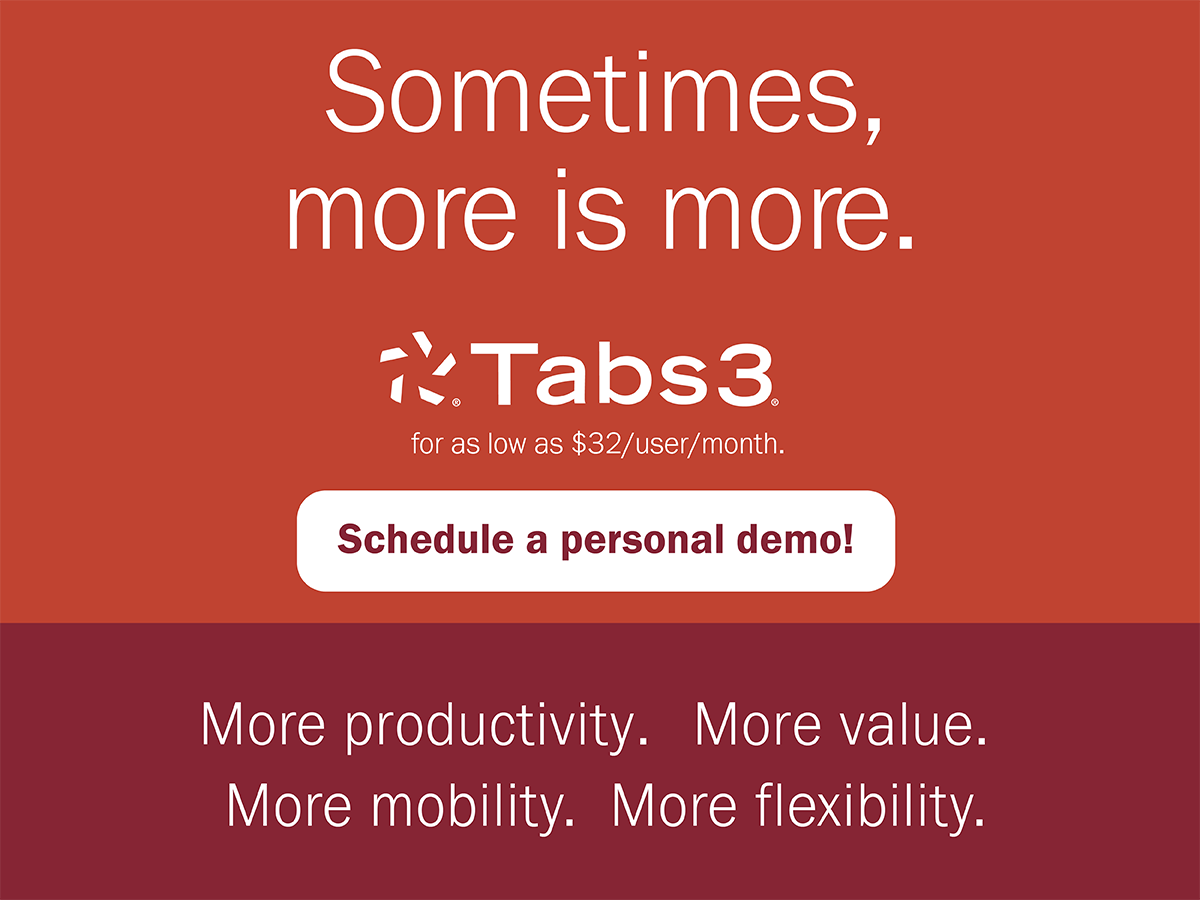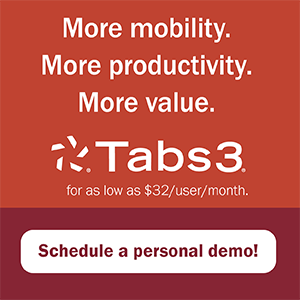It’s a cliché, but it’s true: Change is constant. With the COVID-19 pandemic, we’re reminded how dramatically things can change overnight. Legal managers who are well-versed in change management can minimize the negative impact and move the firm forward. By leveraging change management techniques and tools, leaders can help the process of change be more positive, purposeful, collaborative and successful for everyone.
At the time this article was authored in March 2020, the world was in the midst of a global health crisis that was also producing a global economic crisis. After devastating China and parts of Europe, cases of COVID-19 were on an alarmingly rapid rise in the United States and more than two-thirds of the U.S. population were under state orders to stay at home in an effort to keep the disease from spreading too fast. Businesses were shuttered, schools closed; people were out of work or working remotely from home; high-risk individuals were in isolation.
People were dealing with extraordinary personal and professional changes while health experts and government officials scrambled to lead the country through this unprecedented set of circumstances. While many lessons are yet to be learned and history will look back on this period with plenty of enlightened criticism for leadership and society alike, change management experts are able to observe real-time examples of how leaders have both succeeded and failed at managing the people side of unprecedented change.
This article begins with four truths about change that are evidenced by people’s responses during the coronavirus pandemic and that can be translated into lessons for law firm leaders who want to better understand the practice and fundamentals of change management.
FOUR TRUTHS ABOUT CHANGE
1. Change is a process. Change has to be managed to succeed. Transformation studies over the decades suggest that nearly three-quarters of change initiatives fail to realize their planned benefits or that they are abandoned before completion. And while many factors will contribute to an unsuccessful change project, often the No. 1 obstacle is employee resistance and the ineffective management of the people side of change.
As displayed by the national and local change efforts during the spread of the coronavirus, change is a process. Leaders can’t flip a switch and make a big statement and expect that people will follow. When people were initially asked to “socially distance,” most didn’t comply, believing that the warning either didn’t apply to them or wasn’t important enough to put up with the inconvenience of it. It took several days and weeks, along with forced orders and shutdowns, for people to widely adopt the request. The more leaders understand the human factors at play and recognize that people react, process and ultimately buy in to change at their own pace — and are driven by their own motivators — the more successful they will be.
The process of change can be measured at the organizational level and at the individual level. Given that an organization is nothing more than a group of individuals, it’s the latter that will determine the former.
There are several change models professionals might consult to account for the individual process of change. A simple and easy one to remember is the Kübler-Ross Change Curve, which stems from Elizabeth Kübler-Ross’s Five Stages of Grief. This describes the emotional stages people go through when processing change. It makes sense that humans process change in a way similar to how they process losing a loved one: the beginning feeling of shock, followed by denial, frustration, depression, experimentation, decision and finally integration — in other words, living the new normal.
In any change model, researchers cite a dip where people are at their lowest morale and productivity — the depression stage, according to Kübler-Ross. This dip is more commonly referred to as the “Valley of Despair.” This is the stage where businesses see a drop in performance but an increase in cultural and behavioral issues and employee absence due to stress and illness.
When leaders effectively plan for the people side of change and factor the individual change process into the bigger picture, they can minimize the negative impact and duration of the Valley of Despair. By leveraging change management techniques and tools, leaders can help the process of change be more positive, purposeful, collaborative and successful for everyone.
2. People have an emotional, human reaction to change. Everyone knows that change is hard and uncomfortable. In the case of COVID-19, all changes have been hard and uncomfortable — some to the extreme. The backdrop for these changes is a scary one; it’s certainly can be difficult to find many positives in this.
But if one looks, there are some unexpected positive outcomes: professionals becoming more adept at working remotely; working parents and school-aged children having more time together; people placing more interest in humanity than in the day-to-day grind of work; and increased community-building through creative means.
When planning organizational change in law firms, it is important for leaders to acknowledge and reinforce that while change can be uncomfortable and often hard, it also comes with positives. Some people will perceive change to be a welcome relief to a negative situation; others might find change to be an injection of energy, hope and excitement into their status quo. And for others, change might be a blessing in disguise that only becomes apparent after the fact.
One universal truth about change is that people don’t mind change as much as they mind being changed. When people feel like they have no choice or control, they will have a negative reaction that could set the course for change into an irreversible down curve. The more people feel their rights are being taken away, the more they resort to fear, anger and resistance. Therefore, another critical area of planning and execution for change leaders is communicating in ways that demonstrate how people will personally benefit from the change and offering ways for people to participate, have a voice and control the things they can control.
3. In the absence of information, people make stuff up. Another universal truth to change is that people do not like to be surprised. Most people prefer predictability and stability. When faced with changes to the status quo, people experience fear, uncertainty and doubt (or the FUD Factor). After all, it is human to fear the unknown. When people receive inconsistent, vague or misleading messages about what is happening and what to expect, they can go to a dark place and assume worst-case scenarios.
Consider the rumors and mixed messages that have spread since the coronavirus pandemic began. Health professionals have said one thing, government officials have said other things, and the two haven’t always been aligned. And suddenly toilet paper went from being a commodity to a highly coveted essential item. Yet no leader ever suggested that toilet paper would be affected by the coronavirus or that people should expect to need a large supply of it on hand. People made that up.
Confidence and trust come with understanding. This is why clear, consistent, open and compelling communication is a change leader’s most important job. Leaders must communicate the truth about what is known and unknown, and they must be aligned and consistent. Furthermore, communication should come in terms people can understand and personally identify with. The use of storytelling and visual references helps to make complex or difficult information easier for people to process and act on.
For example, many people in the United States who didn’t fall into the high-risk categories for contracting a severe case of COVID-19 did not understand or appreciate why they should socially distance or avoid going about their daily routines. Then, flatten-the-curve imagery and concepts went viral through memes on social media and news outlets across the country. The brilliance of “flatten the curve” is in how it very simply illustrates the why behind the changes people were being asked to make. And while this alone did not compel everyone to change, it certainly did motivate many people to make the changes that were asked of them. That image gave people a way to easily talk to others about why these individual changes were important to the greater society. To change behavior, people need to understand the personal gain and pain that results from changing versus not changing.
4. Change is constant and isn’t going away. If you look back to just January, this insight could not have been truer. Since the coronavirus outbreak hit the United States, Americans have been inundated with changes on a near daily basis, with little sightline into when life will return to normal and whether the then normal will be vastly different from yesterday’s normal. Yet people are beginning to cope with constant change and have built a sense of resilience for adapting to whatever is the next disruption and change.
Law firms would do well to take a page out of the Centers for Disease Control and Prevention’s (CDC) pandemic playbook when it comes to rolling out large-scale change in smaller incremental measures. For example, the CDC likely knew that schools would need to be closed for an extensive period of time. But rather than coming right out and closing schools for three months, leaders began with two weeks and then added another two weeks and so on. By the time parents began to realize what the CDC already knew, they had already been forced to establish new routines for working from home while caring for their children. This made them more able to psychologically cope when the fuller picture came into focus.
While organizations hopefully won’t face crises like the coronavirus on a regular basis, it is safe to say constant change is already here and will only increase for organizations. The more leaders can create an organizational competency (or playbook) for change, the more internal and external stakeholders will not only accept firm changes but will also ultimately want to contribute to the success of a more nimble and responsive law firm.
UNDERSTANDING YOUR ROLE AS A CHANGE LEADER
Organizational change requires a coalition of leaders who are invested in seeing the change initiative through to the end. The most successful changes will be spearheaded by an executive sponsor who carries a high degree of influence across the firm’s multiple stakeholders. This person will cast the vision, sponsor the charter and be the highest promoter of the effort, while building a coalition of other leaders and influencers at various levels across the organization.
In addition to the sponsor coalition, there is a specific role for managers/practice leaders who will provide representative input to the change process while serving as an advocate, coach and mentor to the people they lead. And, finally, a change project will require a change manager who’s responsible for developing and managing the execution of key change management plans that will produce the desired and perceived benefits of change adoption.
CREATE THE VISION AND STRATEGIC CHARTER
A change initiative without a strategic charter is doomed to fail because it indicates that firm leaders have not thought all the way through the vision, purpose and impact of the change. That could mean that this is not the right change to be making, or at least not right now. Leaders may use the following questions to guide their design process of the vision and strategic charter, which will need to be clearly communicated to internal, and possibly external, stakeholders:
- Why change? What happened? Why now?
- Where are we going and why there?
- How will our people be impacted and involved?
- What change(s) will they experience?
- How will they benefit from the change?
- What is important to them?
- How will it be hard for them?
- What happens if they don’t change?
- How can people participate in the change process?
- What will be our detractors?
- What needs to happen before we can fully execute our vision?
- What else is changing and impacting our people and resources?
- What client and/or market forces will present challenges?
- Where do we anticipate internal pockets of resistance?
- What does success look like?
- What needs to have happened by what time for this to be considered a success?
DESIGN THE CHANGE MANAGEMENT PLANS
The following four change management plans are blueprints for how the change will be communicated, supported and reinforced throughout the firm. They are geared specifically toward managing the people side of change. Often, these plans will overlay project management plans that focus on the logistics, timing and execution of the change implementation itself.
A Communication Plan maps key messages from firm leaders and influencers to various stakeholder groups, along with the planned communication vehicles, drafting, approval and timing for each message. Communication is often the item people point to in hindsight when asked why a change effort was a negative experience. Therefore, proper communication planning and execution is incredibly important and each communication should be thoughtfully constructed and tailored in a way that helps people to best receive the intended key messages.
People want to understand the big picture and the “why” from the executive sponsor and leaders of the firm. And they want to hear the specific benefits (WIIFM — what’s in it for me?) from the person who manages them and understands their day-to-day better than others in the firm. Furthermore, people prefer and will respond better to face-to-face and personalized communications than to impersonal emails. A good communication plan incorporates a variety of modalities to provide clear and compelling communication that creates buy-in, motivates people to take action, sets expectations and encourages feedback.
A Training Plan outlines the required skill-building and knowledge-sharing across the firm. Training can be implemented in a variety of formats, including in-person facilitated sessions, virtual live events, recorded on-demand videos and self-guided learning. The training plan should map out the various types of training that will be available for different stakeholder groups and account for logistics, efficiency, effectiveness and desired outcomes.
A Coaching Plan equips key leaders to coach and mentor the people they lead. Organizational change happens one person at a time and can make a large-scale change project feel overwhelming, particularly in a large organization. The larger the organization, the larger the coalition for coaching and mentoring will need to be. While change acceptance happens at an individual level, so does change resistance. Leaders need to spot and manage resistance within their stakeholder groups, advocate for the change, set a positive example and help people through the process at an individual or small-group level.
A Momentum Plan guides the reinforcement of the reasons for change, tracks successes against an established scorecard, communicates positive results and identifies opportunities for continuous improvement. Often, there is a lot of energy and communication at the beginning of a change initiative that slowly tapers off as sponsors and leaders get busy with other priorities. It’s important to keep the momentum going until adoption and performance goals are reached, which may be a rolling timeline.
Furthermore, leaders need to recognize when people have slipped into their old ways even after initially demonstrating adoption of the change. Therefore, reinforcement and continued check-in, training and coaching is important sometimes for several weeks or months afterward depending on what the change is and how easy it is for people to work around it. To reinforce the positive outcomes produced by change, leaders should celebrate and share early wins and tell success stories of how the change has made a positive difference for attorneys and clients.
CREATING A FIRM COMPETENCY FOR CHANGE
There is no better time than now to commit to creating a competency for change. Each time change is implemented ineffectively, people add it to their banks of learned failure as another example of how change is hard. Learned failure or success happen when people have repeated experiences of failures or successes and they come to learn and expect more of the same. These experiences imprint in people’s memories and cause them to go into the next change with either a greater sense of trust and confidence in the leadership, or with a greater sense of dread and skepticism.
Leaders will find that each change success breeds less resistance for the next change. By continuing to follow change management principles leaders create conditions for people to buy-in and be successful. As a result, the firm will eventually develop a core competency that enables it to be agile, nimble and change-ready in times of crisis as well as in times of opportunity.


